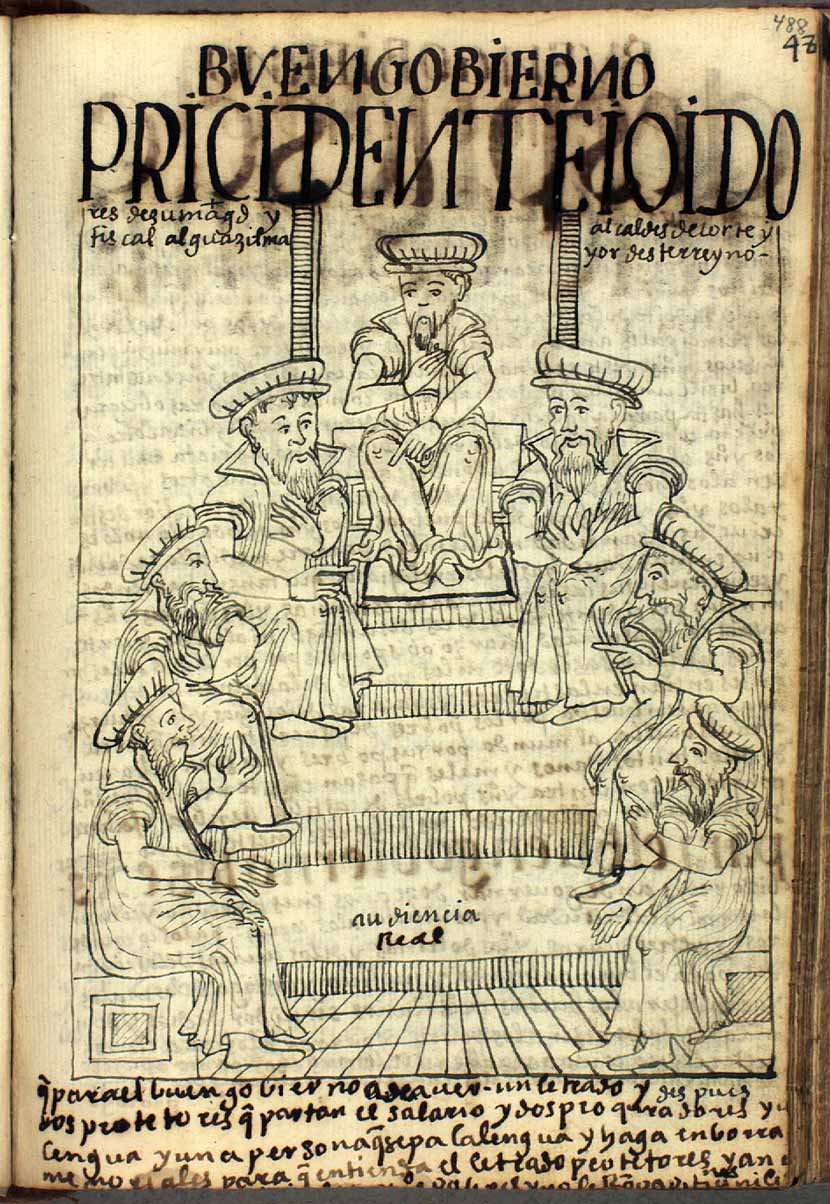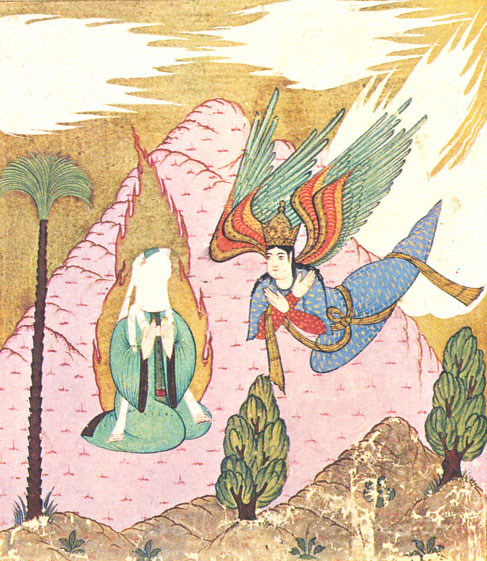|
Manuel Arredondo Y Pelegrín
Manuel Antonio Arredondo y Pelegrín was a Spanish judge, soldier and colonial administrator in Peru and Ecuador. Briefly in 1801 he was interim viceroy of Peru. Biography Arredondo arrived in Peru in 1779 as an ''oidor'' (judge) of the '' Audiencia'' of Lima. He witnessed firsthand the insurrection of Túpac Amaru II, which broke out in November of the following year. Túpac Amaru was defeated in January 1781 and executed in May. In 1786 Arredondo was named regent of the Audiencia, and a short time later captain general (military commander) of the viceroyalty. In 1808 he was granted the title of marqués de San Juan Nepomuceno. Upon the death of Viceroy Ambrosio O'Higgins in Lima on March 19, 1801, Arredondo took office as interim viceroy (by virtue of his position as head of the Audiencia). He was interim viceroy until November 5, 1801, when Gabriel de Avilés, 2nd Marquis of Avilés arrived and took over the government. The revolt of Túpac Amaru was not the only one Arre ... [...More Info...] [...Related Items...] OR: [Wikipedia] [Google] [Baidu] |
Real Audiencia
A ''Real Audiencia'' (), or simply an ''Audiencia'' (), was an appellate court in Spain and its empire. The name of the institution literally translates as Royal Audience. The additional designation ''chancillería'' (or ''cancillería'', Catalan: ''cancelleria'', English: '' chancellery'') was applied to the appellate courts in early modern Spain.Elliot, ''Imperial Spain'', 86. Each ''audiencia'' had '' oidores'' (Spanish: judges, literally, "hearers"). ''Audiencias'' in Spain The first ''audiencia'' was founded in the Kingdom of Castile in 1371 at Valladolid. The Valladolid Audiencia functioned as the highest court in Castile for the next two centuries. Appeals from the Castilian ''audiencias'' could only be made to the Council of Castile after its creation in 1480. After the union of the crowns of Castile and Aragon in the Kingdom of Spain and the subsequent conquest of Granada in 1492, the ''audiencia'' was divided in two, with the Audiencia of Valladolid taking cases o ... [...More Info...] [...Related Items...] OR: [Wikipedia] [Google] [Baidu] |
Viceroys Of Peru
A viceroy () is an official who reigns over a polity in the name of and as the representative of the monarch of the territory. The term derives from the Latin prefix ''vice-'', meaning "in the place of" and the Anglo-Norman ''roy'' (Old French ''roi'', ''roy''), meaning "king". This denotes the position as one who acts on behalf of a king or monarch. A viceroy's territory may be called a viceroyalty, though this term is not always applied. The adjective form is ''viceregal'', less often ''viceroyal''. The term ''vicereine'' is sometimes used to indicate a female viceroy ''suo jure'', although ''viceroy'' can serve as a gender-neutral term. Vicereine is more commonly used to indicate a viceroy's wife, known as the ''viceregal consort''. The term has occasionally been applied to the governors-general of the Commonwealth realms, who are ''viceregal'' representatives of the monarch. The position of a viceroy is by royal appointment rather than a noble rank. An individual viceroy ... [...More Info...] [...Related Items...] OR: [Wikipedia] [Google] [Baidu] |
Viceroyalty Of New Granada
The Viceroyalty of the New Kingdom of Granada ( ), also called Viceroyalty of New Granada or Viceroyalty of Santa Fe, was the name given on 27 May 1717 to the jurisdiction of the Spanish Empire in northern South America, corresponding to modern Colombia, Ecuador, Panama and Venezuela. Created in 1717 by King Felipe V, as part of a new territorial control policy, it was suspended in 1723 for financial problems and was restored in 1739 until the independence movement suspended it again in 1810. The territory corresponding to Panama was incorporated later in 1739, and the provinces of Venezuela were separated from the Viceroyalty and assigned to the Captaincy General of Venezuela in 1777. In addition to those core areas, the territory of the Viceroyalty of New Granada included Guyana, Trinidad and Tobago, southwestern Suriname, parts of northwestern Brazil, and northern Peru. A strip along the Atlantic Ocean in Mosquito Coast was added by the Royal Decree of 20 November 1803, but ... [...More Info...] [...Related Items...] OR: [Wikipedia] [Google] [Baidu] |
Viceroyalty Of Peru
The Viceroyalty of Peru (), officially known as the Kingdom of Peru (), was a Monarchy of Spain, Spanish imperial provincial administrative district, created in 1542, that originally contained modern-day Peru and most of the Spanish Empire in South America, governed from the capital of Lima. Along with the Viceroyalty of New Spain, Peru was one of two Spanish Viceroyalty, viceroyalties in the Americas from the sixteenth to the eighteenth centuries. The Spanish did not resist the Portuguese colonization of the Americas, Portuguese expansion of Brazil across the meridian established by the Treaty of Tordesillas. The treaty was rendered meaningless between 1580 and 1640 while Iberian Union, Spain controlled Portugal. The creation during the 18th century of the Viceroyalties of Viceroyalty of New Granada, New Granada and Viceroyalty of the Río de la Plata, Río de la Plata (at the expense of Peru's territory) reduced the importance of Lima and shifted the lucrative Andean trade t ... [...More Info...] [...Related Items...] OR: [Wikipedia] [Google] [Baidu] |
José Fernando De Abascal Y Sousa
José Fernando de Abascal y Sousa, 1st Marquess of Concordia, KOS (), (sometimes spelled ''Souza'') (June 3, 1743 in Oviedo, Asturias, Spain – June 30, 1821 in Madrid) was a Spanish military officer and colonial administrator in America. From August 20, 1806, to July 7, 1816, he was viceroy of Peru, during the Spanish American wars of independence. Background Abascal was born into a noble family. At the age of 19 he entered the army. After serving for 20 years he was promoted to colonel, and later in the war against France, to brigadier. In 1796 he took part in the defense of Havana against the British. Three years later he was named commanding general and intendant of Nueva Galicia (western Mexico). He took up that office in 1800. In 1804 he was named viceroy of Río de la Plata in Buenos Aires. He never took possession of the office, because in the same year (1804) he was named viceroy of Peru. As viceroy of Peru He was unable to occupy the position of viceroy in Lima un ... [...More Info...] [...Related Items...] OR: [Wikipedia] [Google] [Baidu] |
Napoleon I Of France
Napoleon Bonaparte (born Napoleone di Buonaparte; 15 August 1769 – 5 May 1821), later known by his regnal name Napoleon I, was a French general and statesman who rose to prominence during the French Revolution and led Military career of Napoleon, a series of military campaigns across Europe during the French Revolutionary and Napoleonic Wars from 1796 to 1815. He led the French First Republic, French Republic as French Consulate, First Consul from 1799 to 1804, then ruled the First French Empire, French Empire as Emperor of the French from 1804 to 1814, and briefly again in 1815. He was King of Italy, King of Kingdom of Italy (Napoleonic), Italy from 1805 to 1814 and Protector of the Confederation of the Rhine, Protector of the Confederation of the Rhine from 1806 to 1813. Born on the island of Corsica to a family of Italian origin, Napoleon moved to mainland France in 1779 and was commissioned as an officer in the French Royal Army in 1785. He supported the French Rev ... [...More Info...] [...Related Items...] OR: [Wikipedia] [Google] [Baidu] |
Quito Revolution (1809-1812)
Quito (; ), officially San Francisco de Quito, is the capital city, capital and second-largest city of Ecuador, with an estimated population of 2.8 million in its metropolitan area. It is also the capital of the province of Pichincha Province, Pichincha. Quito is in a valley on the eastern slopes of Pichincha (volcano), Pichincha, an active stratovolcano in the Andes. Quito's elevation of makes it either the List of capital cities by altitude, highest or the second highest national capital city in the world. This varied standing is because Bolivia is a List of countries with multiple capitals, country with multiple capitals; if La Paz is considered the Bolivian national capital, it tops the list of highest capitals, but if Sucre is specified as the capital, then it is the second highest, behind Quito. ... [...More Info...] [...Related Items...] OR: [Wikipedia] [Google] [Baidu] |
Gabriel De Avilés, 2nd Marquis Of Avilés
In the Abrahamic religions (Judaism, Christianity, Islam), Gabriel ( ) is an archangel with the power to announce God's will to mankind, as the messenger of God. He is mentioned in the Hebrew Bible, the New Testament and the Quran. Many Christian traditions – including Eastern Orthodoxy, Catholicism, Lutheranism, and Anglicanism – revere Gabriel as a saint. In the Hebrew Bible, Gabriel appears to the prophet Daniel to explain his visions ( Daniel 8:15–26, 9:21–27). The archangel also appears in the Book of Enoch and other ancient Jewish writings not preserved in Hebrew. Alongside the archangel Michael, Gabriel is described as the guardian angel of the people of Israel, defending it against the angels of the other peoples. In the New Testament, the Gospel of Luke relates the Annunciation, in which the angel Gabriel appears to Zechariah foretelling the birth of John the Baptist with the angel Gabriel foretelling the Virgin Mary the birth of Jesus Christ, re ... [...More Info...] [...Related Items...] OR: [Wikipedia] [Google] [Baidu] |
Ambrosio O'Higgins, Marquis Of Osorno
Ambrosio Bernardo O'Higgins y O'Higgins, 1st Marquess of Osorno (c. 1720 – 19 March 1801) born Ambrose Bernard O'Higgins (''Ambrós Bearnárd Ó hUiginn'', in Irish), was an Irish-Spanish colonial administrator and a member of the O'Higgins family. He served the Spanish Empire as a captain general (i.e., military governor) of Chile (1788–1796) and as the Viceroy of Peru (1796–1801). He was the father of Chilean independence leader Bernardo O'Higgins. Early life A member of the O'Higgins family, Ambrose was born at his family's ancestral seat in Ballynary, County Sligo, Ireland. He was the son of Charles O'Higgins and his wife (and kinswoman) Margaret O'Higgins,The National Genealogical Office (Dublin), MS 165. pp. 396–399. who were forced off their lands in 1654 by Oliver Cromwell and became tenant farmers at Clondoogan near Summerhill, County Meath .Ibañez Vergara, Jorge. ''Demetrio O'Higgins''. Along with other members of his family Ambrose worked in the service of ... [...More Info...] [...Related Items...] OR: [Wikipedia] [Google] [Baidu] |
Túpac Amaru II
Tupac Amaru II (born José Gabriel Condorcanqui Noguera, – 18 May 1781) was an Indigenous ''cacique'' who led a Rebellion of Túpac Amaru II, large Andean rebellion against the Viceroyalty of Peru, Spanish in Peru as Self-proclaimed monarchy, self-proclaimed Sapa Inca of the new Inca Empire. He was later elevated to a mythical status in the Independence of Peru, Peruvian struggle for independence and indigenous rights movement, as well as an inspiration to myriad causes in Hispanic America, Spanish America and beyond. Early life Tupac Amaru II was born José Gabriel Condorcanqui Noguera in around 1742 in Surimana, Tungasuca , in the Cusco Region, province of Cusco, to Miguel Condorcanqui Usquionsa Tupac Amaru, ''kuraka'' of three towns in the Tinta district, and María Rosa Noguera. On 1 May 1742, Tupac Amaru II was baptized by Santiago José Lopez in a church in Tungasuca. Prior to his father's death, Amaru II spent his childhood in the Vilcamayu Valley; he accompanied ... [...More Info...] [...Related Items...] OR: [Wikipedia] [Google] [Baidu] |





